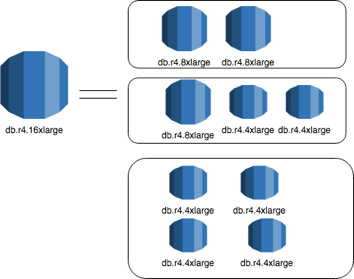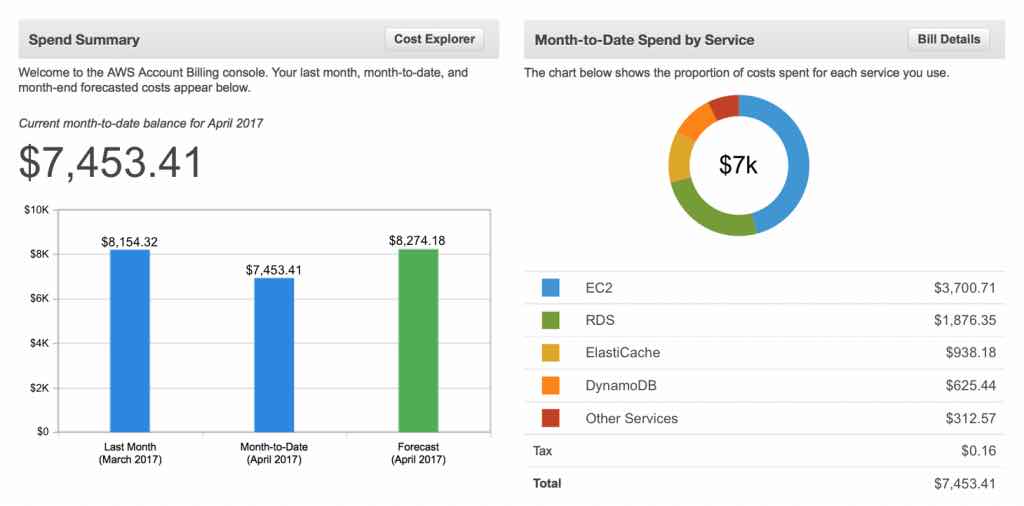In this post, we would understand what are reserved instances, when do you need them and various ways to monitor them in your environment.
As more enterprises are embracing AWS cloud technologies, we need to understand AWS’s breadth of services and pricing options to right size our compute resources and run efficient infrastructure. Cost optimization is one of the 5 pillars of AWS Well-Architected Framework, a framework developed by AWS to help cloud architects build secure, high-performing, resilient, and efficient infrastructure for their applications. If you would like to read more about the Cost optimization pillar, you can refer to this whitepater.
Introduction
Reserved Instance(RI) is a billing concept which provides pricing discounts for your running instances in AWS accounts to help lower costs. In case of EC2, they also provide capacity reservation i.e AWS will ensure that you always have access to EC2 capacity when you need it, for as long as you need it . The discounted usage price is fixed for the term of the RI, allowing you to predict costs over the term of the reservation. If you are expecting consistent heavy use (e.g., Database Services), RIs can provide significant cost savings as compared to using On-Demand instances. Important point to note is that RI is not a physical instance.i.e to achieve savings, you don’t have to modify your running instance.
When you purchase RI, the RI is automatically applied to running RDS/Redshift nodes with the same instance parameters (Region, Engine/Node Type, RDS DB Instance Class, and Instance Count). RI does not renew automatically; you can continue to use the RDS/Redshift instances/nodes without interruption, but you will be charged On-Demand rates if you do not have sufficient number of RI counts in your AWS account. RI can be visualised as discount coupons that can be applied to your final monthly bill.
Below table provides a list of parameters that you can set when purchasing RI. If there is mismatch in any of the parameter, RI discount will not be applied.
| Database Type | RI Region | RI Type | RI Class | RI Count |
| Amazon RDS | Region | Engine Type | DB Instance Class | Instance Count |
| Redshift | Region | Node Type | Node Count |
For example, let’s consider that you have been running 2 PostgreSQL RDS (r3.db.4xlarge) instances and 2 MySQL RDS (r3.db.4xlarge) instances in us-east-1 since December 2017. On January 1 2018, you purchased RI for 3 PostgreSQL r3.db.4xlarge instances in us-east1. At the end of January 2018, your monthly bill would include RDS RI discount on 2 PostgreSQL RDS instances since you only have 2 running PostgreSQL RDS instances in us-east-1 region. As a result, your January 2018 monthly bill would include 2 MySQL RDS with On-Demand rate and 1 unused RI available for RDS PostgreSQL database engine (see Table 2).
| Region | Engine Type | DB Instance Class | Running Instance | RI Available | RI Applied |
| us-east-1 | PostgreSQL | db.r3.4xlarge | 2 | 3 | 2 |
| us-east-1 | MySQL | db.r3.4xlarge | 2 | 0 | 0 |
In order to optimize your monthly billing for all the RDS instances, you would need to purchase additional RDS RI. To do so, you would purchase additional RI in us-east-1 with RDS MySQL database Engine Type, Instance type/size and count.
RDS Instance Size Flexibility
Amazon RDS Reserved Instances provide size flexibility for the MySQL, MariaDB, PostgreSQL, and Amazon Aurora database engines. With size flexibility, your RI’s discounted rate will automatically apply to usage of any size in the instance family (using the same database engine).
e.g If you are running a db.r4.8xlarge with corresponding RI ,and have now decided to upgrade to db.r4.16xlarge, then you can purchase reservation for 1 db.r4.8xlarge to avoid on-demand charges. Below diagram tries to depict that with 1 db.r4.16xlarge reservation, you can run multiple combinations – (2 db.r4.8xlarge ) or (4 db.r4.4xlarge) or (1 db.r4.8xlarge and 2 db.r4.4x.large).

AWS uses Normalized units to arrive at these calculations. The following table shows the number of normalized units for each DB instance size.
| Instance Size | Single-AZ Normalized Units | Multi-AZ Normalized Units |
|---|---|---|
| micro | 0.5 | 1 |
| small | 1 | 2 |
| medium | 2 | 4 |
| large | 4 | 8 |
| xlarge | 8 | 16 |
| 2xlarge | 16 | 32 |
| 4xlarge | 32 | 64 |
| 8xlarge | 64 | 128 |
| 10xlarge | 80 | 160 |
| 16xlarge | 128 | 256 |
When to Purchase Reserved Instance?
In order to utilise Reservations optimally, buy RI instances if you plan to use resource for long duration. AWS provides 1-year and 3-year offerings along with option to pay No upfront, partial upfront and All Upfront and hourly rates varies based on the option chosen. You can refer to Redshift Pricing and RDS Pricing for the rates.
Note:- Redshift and RDS RI do not come with a capacity guarantee as they are only a billing discount.
Considering that these are fixed commitments, you will be charged regardless of usage. Therefore, if the resource is going to be short-lived or you are not sure if it’s the right instance type, then it would be recommended to use On-Demand instances. Also, if you need to upgrade capacity for short duration i.e say for 10 days in a calendar year, it would make sense to pay on-demand charges for that extra capacity rather than purchasing reservation. You can make use of AWS Simple Monthly Calculator to arrive at the total cost and make informed decision.
Monitoring
You should monitor your reservations as there could be mismatch which could impact your monthly bill. Mismatch could be due to following scenarios:
- Scaling: In case of scaling activity like adding new RDS read replica or adding additional nodes to cluster (Redshift), new reservations need to be bought else there can be mismatch in Total running vs Total Reserved cluster.
- Expired Reservations: Reservations have fixed term of 1 or 3 years and expire after completion of term. They are not auto-renewed which can lead to resources running with On-Demand pricing
I have listed below commands to get information about running and reserved resources (RDS and Redshift). You can also get this information from AWS console under the respective service.
List running RDS DB instances
$aws rds describe-db-instances --query "DBInstances[*].[DBInstanceIdentifier,DBInstanceClass,Engine,DBInstanceStatus,MultiAZ]" --output table
List RDS reservations
$aws rds describe-reserved-db-instances --query "ReservedDBInstances[*].[ReservedDBInstanceId,ProductDescription,DBInstanceClass,StartTime,Duration,DBInstanceCount,MultiAZ]" --output table
List Running Redshift Clusters
$aws redshift describe-clusters --query "Clusters[*].[ClusterIdentifier,NodeType,ClusterStatus,ClusterCreateTime,NumberOfNodes]" --output table
List Active Redshift Reservations
$ aws redshift describe-reserved-nodes --query "ReservedNodes[?State=='active'].[ReservedNodeOfferingId,NodeType,StartTime,Duration,NodeCount]" --output table
References
https://docs.aws.amazon.com/AmazonRDS/latest/UserGuide/USER_WorkingWithReservedDBInstances.html
https://docs.aws.amazon.com/redshift/latest/mgmt/purchase-reserved-node-instance.html
